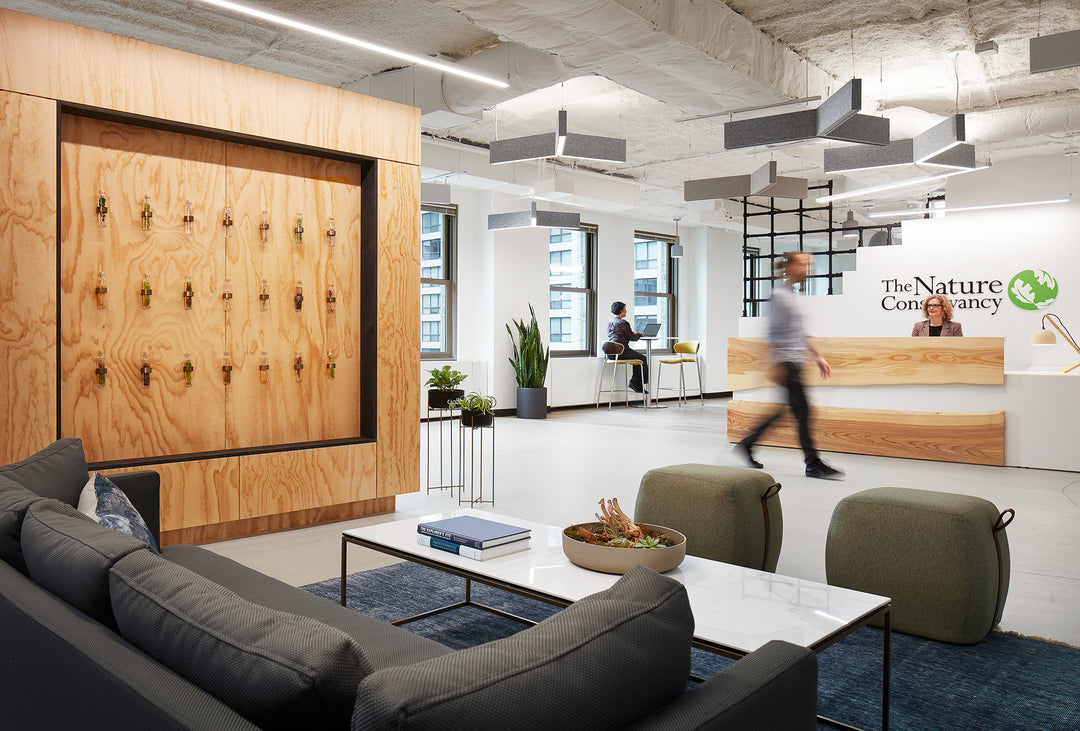Take a Seat, (But Not Just) Any Seat
Spend enough time in any profession and you’ll notice things out in the world that other people just never see. I wouldn’t know a carburetor from an alternator or one red wine from the next, but any Napa Valley mechanic worth his merlot-stained wrenches sure would. People who sell office furniture are no different. Put a receptionist in a conference chair, and we notice. Surround a conference table with side chairs, and we wonder who dropped you on your wee head when you were a kid. Although the lines have blurred a little in the last several years, the wide variety of office seating on the market were developed to answer specific consumer needs. Some of the names are interchangeable, but the functions are well defined. These are some of the different types of office chairs to know.
Task Chair
Often called an office desk chair or an office chair, this is the one chair that means so much to so many. It’s where a lot of us spend quite a bit of every working day so the better the quality, the happier and more productive the user. The ergonomics of an office task chair, or how it interacts with, and responds to, the body, set it apart from other seating. The adjustability of the arms, back, and seat allow the sitter to manipulate it so it’s as comfortable as possible for his or her body type. It usually has a base with five “fingers” and rolls along on casters. Office task chairs tend to be very personal like a favorite coffee cup. Marriages come and go, governments rise and fall, and mountains crumble into the sea, but the love between a middle manager and his task chair endures forever.
Conference Chair
People who don’t know one from the other will often use a conference chair where an office task chair is needed. Stylistically, they’re close, but conference seating, by design, isn’t as flexible. The main difference between the two is adjustability. Conference chair arms and backs tend to be “fixed”, meaning they don’t adjust. The reason behind this is that people are usually in conference chairs for a comparatively short time so adjustability isn’t as important. The fixed nature of such seating keeps the chairs, more or less, uniform, and the conference room looking organized. Task and conference chairs are typically the same from the seat down. The seat height is always adjustable, and the tilt-tension, how much resistance the sitter wants while leaning back, is as well. And like office task chairs, they also roll around on casters.
Stack Chair
Other than large rocks or a floor, office seating doesn’t get much more basic than stack chairs. Lightweight, with arms or without, plastic or upholstered, this type of office chair is ideal when the venue calls for quick and frequent changes to the number and layout of chairs. They may be made completely out of plastic, or be comprised of a plastic seat and back fixed within a wire frame. Some have 4 “stick” legs, while others have a “sled base” where the bottom of the frame usually sits on glides and runs parallel to the floor along its entire length. The glides are small plastic stand offs that keep the runner from marring the floor. Flexibility is the key to stack chairs, and that has everything to do with weight. In no time at all, one or two people can put the chairs on a dedicated dolly, available for most stack chairs on the market, and wheel them out of the way. Try doing that with office task chairs….or large rocks.
Guest Chair
Guest chairs are also known as visitor or side chairs. These are the extra seats that sit in the front of a desk in a private office, over to the side in a cubicle, or just about anywhere else they fit for those who have people dropping by to talk. Often they’re upholstered wood chairs in settings that call for formal office seating. From casual to traditional, wood and upholstery help establish the tone guests expect from law firms and similar venues. Plumbing contractors, on the other hand, may be well advised to go with simpler side chairs of plastic and metal. Far from being a function of cost and material, choosing the right office guest chair is a matter of appropriateness. If I find my attorney has cheap metal folding chairs as guest seating, I might think he’s not the right guy to handle my billion dollar IPO. Similarly, I don’t expect to be sitting in a wing back chair with ball and claw feet and goose neck arms when I’m talking to my plumber about a leaky faucet.
There are some very good office and desk chairs on the market that have stood the test of time and still sell well today. On the other hand, we’ve all sat in chairs that are built so poorly, they’re practically disposable. The key thing to remember when buying an office desk chair is that cost is a concern, but quality is crucial, and comfort is king.
Call Terry Cray, Office Furniture Guy, with questions or comments you may have.
M 773.908.0462
E terryc@rework-furniture.com




